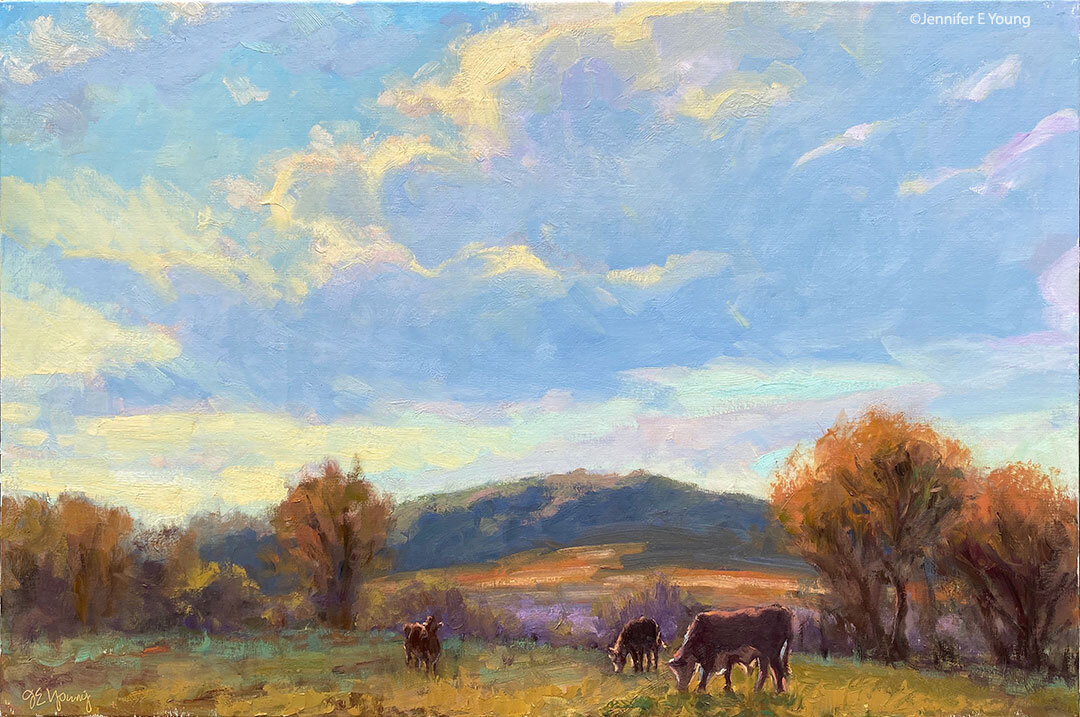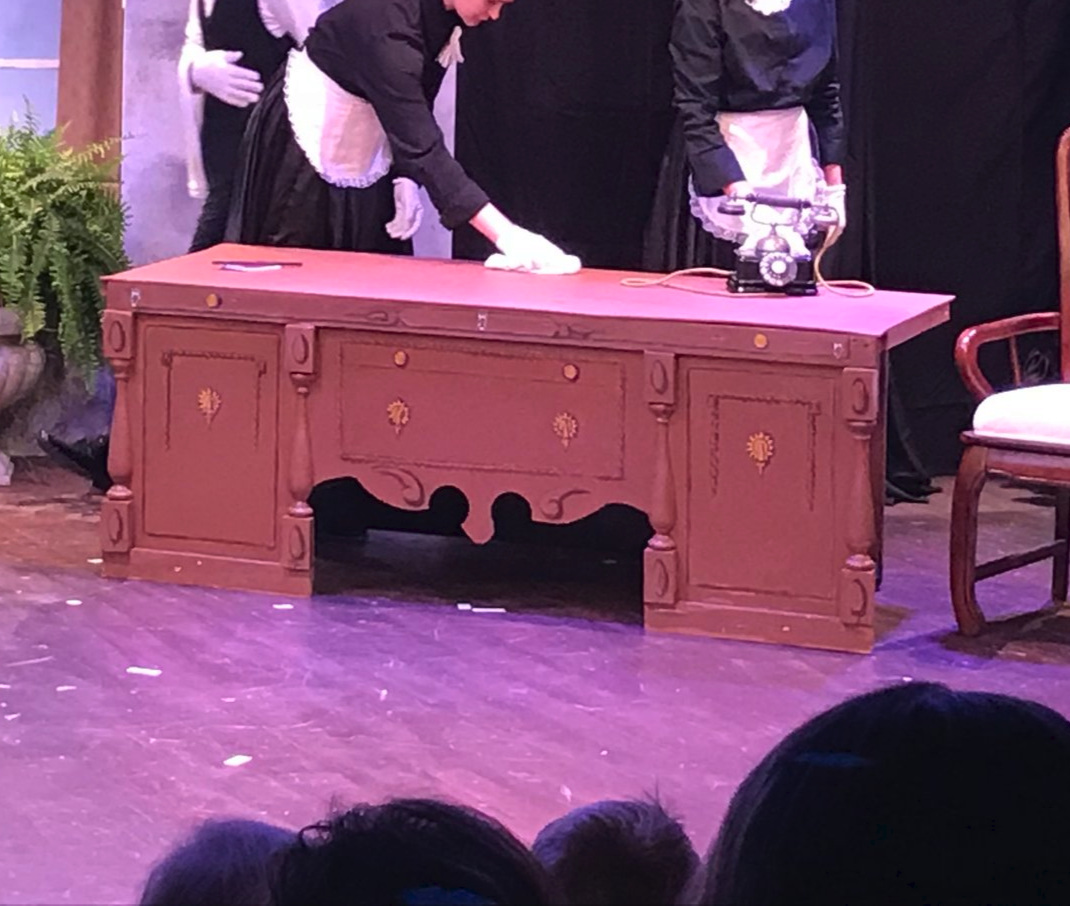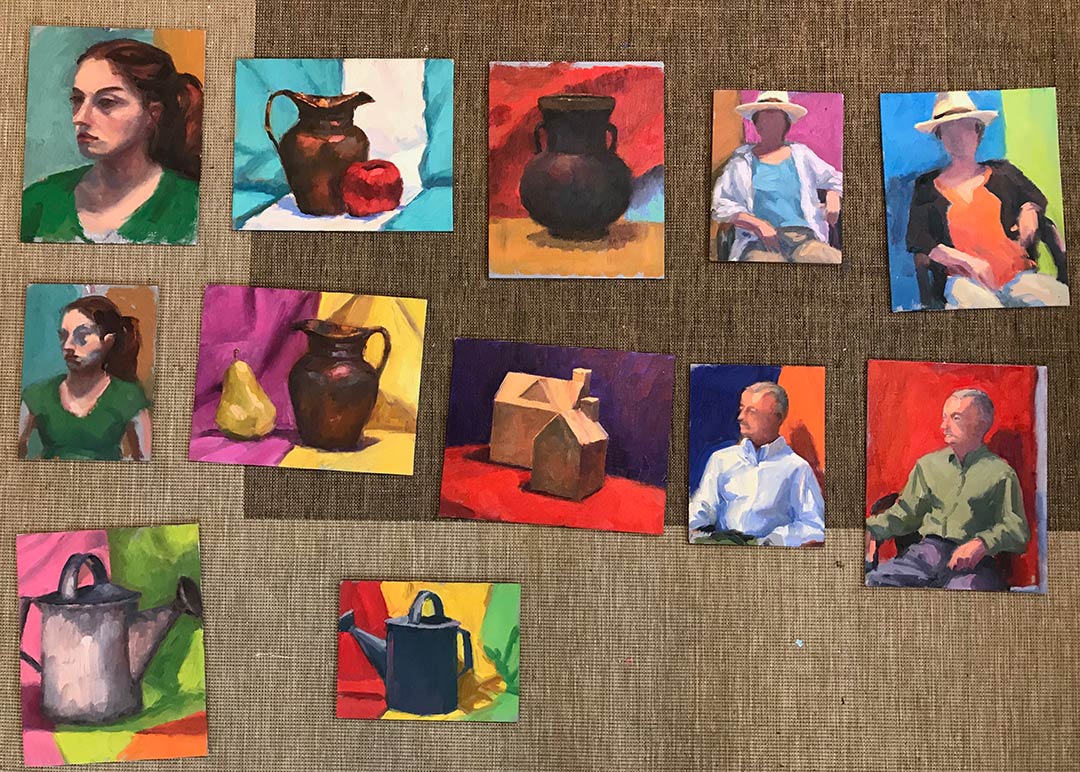This week I took an out of town trip up to Washington D.C. with a friend to catch the Cezanne landscape exhibit. It was the last week that the show was on view and I am SO glad I had a chance to see it! It was a magnificent representation of his work, with galleries that seemed to go on and on. The show was devoted primarily to his landscapes but also included portraits, some still life, and his Bather series.
Having seen (and been in awe of) his many still life paintings in previous exhibitions, the landscapes are what held my attention the most. I must say that no photo reproduction I've see does justice to his work. It was exciting to see the transition his paintings made when he began painting outside. His landscapes seemed completley transformed; going from heavy tonalist works to paintings full of light and color. But what was most striking to me was the incredible structure most of his paintings had. Many of his paintings were done from odd and unique perspectives, and his subject matter and compositional choices were not always typical of what the landscape painter might choose. And yet he had a way for line and composition that made the structure of his paintings feel almost sculputural.
Cezanne was interested in the formal elements of painting, and not really concerned with painting beautiful scenes, per se. For instance his paintings of the coast of L'Estaque did not depict an idealized harbor. Instead he chose to include an industrialized view of the smokestacks along the coast. He also did a number of paintings of the red rock quarries, which to me felt especially exploratory, as this subject lent itself very well to exploring his near cubist abstractions.
And yet there were so many paintings in that show that I found to be incredibly beautiful, both in the the choice of the subject and the handling of it. In particular the paintings of the countryside close to his home near Aix were so lovely. In addition to the well-known Mt. Saint Victoire series, there were many paintings of the rocky hillside villages and crumbling old farmhouses. In any event, I got the sense that he was always experimenting, exploring; perhaps sometimes frustrated (?), but never bored.
Cezanne had a light, feathery touch, and many of his oils were handled in a way that to me felt almost like watercolors. He had a masterful knowledge of color, though he used it in a subtle way. His greens were some of the richest I've seen, and within their shadows were hints of rose, blue, violet and lavender.
There was also an entire room devoted to his watercolors and drawings. These were light, sketchy things, but within them I could see the seeds of Modernism and the inspiration for the Cubists still to come.
It was our intention that day to catch the Cezanne show and then head over to the Phillips Collection in Dupont Circle to see the Degas and the Renior show. But we both agreed that we wanted some time to just absorb all of the great Cezannes we had just taken in. It's kind of like eating a meal. If it is a great one, you want time to just sit with the delicious experience before you move on to desert. And if it truly is great, maybe you don't even need desert at all!
To see my own paintings of Provence, click here.
Tags: art painting landscape painting artist plein air Cezanne





 Can Can Brasserie in Richmond, Virginia celebrates Art in our Community. One evening only. I will provide the art, and Can-Can will provide the wine tasting and munchies. The restaurant is located in the heart of Carytown in Richmond, VA, at 3120 W. Cary Street, Richmond, VA.
Can Can Brasserie in Richmond, Virginia celebrates Art in our Community. One evening only. I will provide the art, and Can-Can will provide the wine tasting and munchies. The restaurant is located in the heart of Carytown in Richmond, VA, at 3120 W. Cary Street, Richmond, VA. Please join us for an art opening on Friday October 20th from 6 to 9 p.m. I will be one of six artists featured in the First Annual Landscape Exhibit at the Rentz Gallery. The gallery is located at 1700 W. Main St in Richmond, VA. Show continues through November 27th. Contact the gallery at 804.358.5338 for more information.
Please join us for an art opening on Friday October 20th from 6 to 9 p.m. I will be one of six artists featured in the First Annual Landscape Exhibit at the Rentz Gallery. The gallery is located at 1700 W. Main St in Richmond, VA. Show continues through November 27th. Contact the gallery at 804.358.5338 for more information.

























